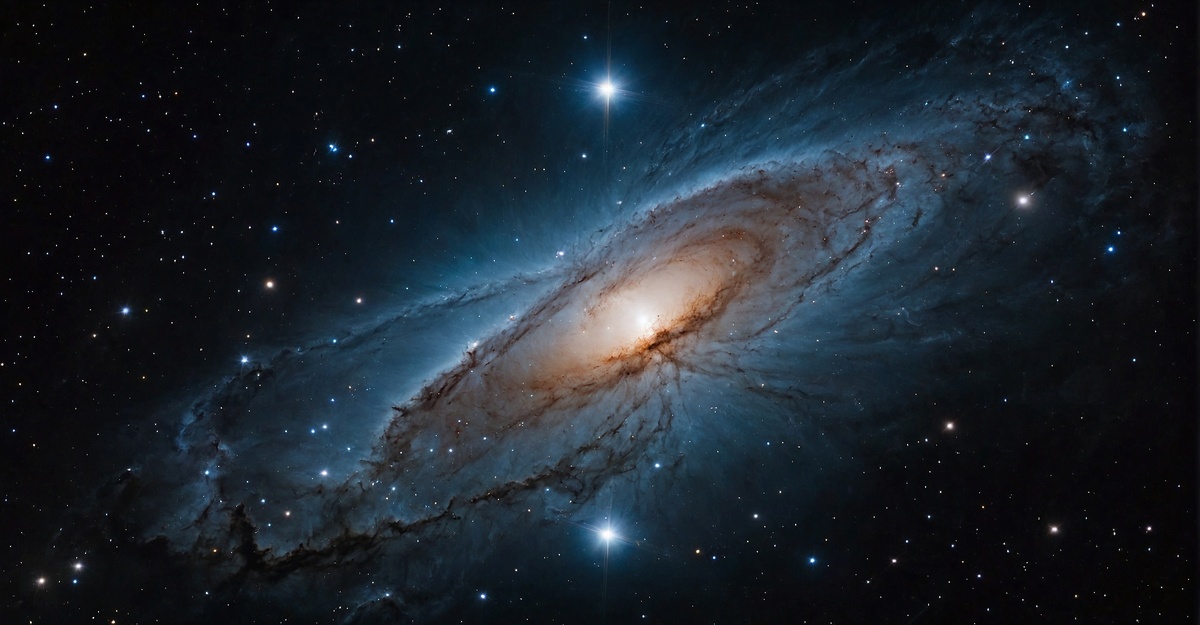Anúncios
The life cycle of stars is one of the most intriguing and fundamental phenomena in the universe, revealing how stars form, evolve, and eventually die. Beginning in a cloud of gas and dust, stars go through several stages before reaching their final destination. The transformation of these cosmic giants is crucial for the formation of new elements and for understanding the dynamics of the cosmos.
Studying these phases of stellar evolution not only provides insights into how the universe works but also into the origin of the elements that make up the matter around us. The process of birth, life, and death of stars directly impacts the formation of planets and even the possibility of life elsewhere in the universe, making it a fascinating and essential field for astronomy.
Anúncios

The Beginning: Birth of Stars
The birth of a star begins in a molecular cloud, where gravity causes the gas and dust to clump together. This process gives rise to a protostar, an early stage of a young star. The protostar gradually heats up as it accumulates more matter, preparing for nuclear fusion.
When the temperature and pressure conditions are high enough, nuclear fusion begins in its core. This phenomenon marks the transition to the main sequence star phase. During this phase, the star begins to shine and maintains a stable energy balance for a long period.
The time a star spends in this phase depends on its mass. Smaller stars, like the Sun, can remain for billions of years, while massive stars live much shorter lives. The amount of matter accumulated during formation also determines how much energy the star will generate.
This formation process is essential for creating heavy elements, which are scattered into space when the star reaches the end of its life. These elements are crucial for the formation of planets and even for life as we know it.
Expansion into a Red Giant

As a main sequence star consumes its hydrogen fuel, it begins to undergo significant transformations. Medium-mass stars, like the Sun, begin to expand into a red giant. During this phase, the star’s core contracts while its outer layers expand enormously.
During this expansion, the star begins to fuse helium in its core, creating heavier elements. Helium fusion is a crucial step in the stellar life cycle, as it generates enough energy to continue sustaining the star in its red giant phase. However, this process is temporary and does not last long.
The fusion of heavier elements, such as carbon and oxygen, occurs in massive stars, leading to a succession of fusions that continue until the formation of iron. When the iron core forms, the star can no longer generate energy through nuclear fusion, leading to a series of catastrophic events.
This fusion and expansion process results in a massive release of energy, making the star much brighter. However, this intense brightness is temporary, and the star is approaching the end of its life.
Death of Massive Stars: Supernova
Massive stars do not undergo a simple fusion process. When the core reaches the iron phase, it can no longer support the pressure required for nuclear fusion. The sudden collapse of the core leads to a cataclysmic explosion known as a supernova.
The supernova explosion is one of the brightest and most energetic events in the universe. During this process, the star releases an enormous amount of energy, scattering heavy elements into space. These elements are essential for the creation of new stars, planets, and even life.
Additionally, the supernova may leave behind remnants such as neutron stars or black holes, depending on the mass of the original star. These remnants are extremely dense objects with unique properties, such as intense gravitational fields.
The supernova explosion is also important for the evolution of the universe, as the release of heavy elements contributes to the enrichment of the interstellar medium. This allows for the formation of new stellar systems and planets.
How Do Stars Form and Evolve in the Life Cycle of Stars from Birth to Supernova?

The life cycle of stars is a complex and fascinating process that begins with the birth of a star in a dense region within a molecular cloud, known as a stellar nursery. This process involves the gravitational collapse of gas and dust, leading to the formation of a protostar. As the protostar continues to accumulate mass and heat, it reaches the temperatures and pressures necessary to initiate nuclear fusion in its core. This marks the transition from a protostar to a main sequence star, where it will spend most of its life.
As stars evolve, they undergo significant changes influenced by their mass. Low to medium-mass stars, like our Sun, expand into red giants and eventually shed their outer layers, leaving behind a hot core that becomes a white dwarf. In contrast, massive stars go through more dramatic transformations, culminating in a supernova explosion. This explosion not only marks the end of the star’s life but also plays a crucial role in the distribution of elements throughout the universe, contributing to the formation of new stars and planets.
The life cycle of stars is not just a scientific curiosity; it is essential for our understanding of the universe. The processes that govern stellar evolution are responsible for creating the elements that make up everything we see around us, including ourselves. By studying the life cycle of stars, astronomers can gain insights into the history of the universe, the formation of galaxies, and the potential for life beyond Earth.
Advantages of Understanding the Life Cycle of Stars from Birth to Supernova
Understanding the life cycle of stars offers numerous advantages, especially in the fields of astronomy and astrophysics. First, it allows scientists to understand the fundamental processes that govern the formation and evolution of stars. By studying these processes, astronomers can develop models that predict the behavior of stars in various phases of their life cycles. This predictive ability is essential for understanding the dynamics of galaxies and the universe as a whole.
Second, knowledge of the life cycle of stars enhances our understanding of chemical evolution in the universe. Stars are responsible for synthesizing elements through nuclear fusion. When they reach the end of their life cycle and explode as supernovas, they scatter these elements into space, enriching the interstellar medium. This enrichment is crucial for the formation of new stars, planets, and even life. By understanding how stars create and distribute elements, we can trace the chemical history of the universe and our own origins.
Additionally, studying the life cycle of stars helps astronomers identify and classify different types of stars and their evolutionary paths. This classification is fundamental for understanding the diversity of celestial objects we observe in the universe, from red dwarfs to blue supergiants. Each type of star has unique characteristics and behaviors, and understanding these differences allows for a more comprehensive view of stellar populations in galaxies.
Finally, the study of stellar life cycles contributes to our understanding of cosmic events such as supernovae and gamma-ray bursts. These explosive events release vast amounts of energy and can have significant effects on their surroundings. By studying the mechanisms behind these phenomena, astronomers can gain insights into the fundamental laws of physics and the behavior of matter under extreme conditions.
How to Explore the Life Cycle of Stars from Birth to Supernova
Discover the stages of stellar formation, from the protostar to the main sequence star. The journey begins in a molecular cloud, where dust and gas clump together under gravity, forming a protostar. As the protostar accumulates mass, it heats up, eventually initiating nuclear fusion in its core and becoming a main sequence star.
Learn about the transformation into a red giant and the process of helium fusion. As a star exhausts its hydrogen fuel, it expands into a red giant. During this phase, helium fusion occurs in the core, leading to the formation of heavier elements that will be crucial for the next stages of stellar evolution.
Understand the dramatic supernova explosion and its effects on the universe. When massive stars reach the end of their life cycle, they undergo a supernova explosion. This cataclysmic event not only marks the death of the star but also scatters heavy elements across the cosmos, contributing to the formation of new stars and planets.
Explore the types of stellar remnants, including neutron stars and black holes. After a supernova, the remnants of the star can take several forms. Neutron stars are incredibly dense objects formed from the collapsed core of a massive star, while black holes represent the final destination of the most massive stars, where gravity is so strong that even light cannot escape.
Investigate the importance of studying the life cycle of stars for astronomy. Understanding stellar evolution is fundamental for astronomers, as it provides insights into the structure and dynamics of galaxies, the formation of planetary systems, and the overall evolution of the universe.
Discover how this knowledge impacts our understanding of the cosmos. Studying the life cycle of stars helps us answer profound questions about the nature of the universe, the origins of elements, and the potential for life beyond Earth. It connects us to the greater cosmic narrative.
The life cycle of stars from birth to supernova is a fascinating journey that reveals the dynamic nature of our universe. By exploring the stages of stellar evolution, we can appreciate the interconnection of all celestial phenomena and our place within the cosmos.
Did You Enjoy Learning About the Life Cycle of Stars from Birth to Supernova?
Exploring the life cycle of stars from birth to supernova opens a world of wonders in astronomy. Each phase tells a story of transformation and energy that shapes our universe. The intricate processes involved in the formation and evolution of stars not only illuminate the cosmos but also provide insights into our own origins.
We hope this glimpse into the life cycle of stars from birth to supernova inspires you to delve deeper into the mysteries of the cosmos. There is always more to discover! The universe is full of secrets waiting to be unraveled, and the journey through the life cycle of stars is just the beginning.
Frequently Asked Questions
What is the life cycle of stars from birth to supernova?
The life cycle of stars from birth to supernova includes several stages. A star is born from a cloud of gas and dust. Then, it shines as a stable star. Eventually, some larger stars explode as supernovas.
How do stars form?
Stars form in dense clouds of gas. Gravity makes the gas clump together and heat up. When it gets hot enough, nuclear fusion begins, and the star is born.
What happens when a star dies?
When a star dies, several things can happen. Smaller stars become white dwarfs. Larger stars may explode as supernovas and leave behind black holes or neutron stars.
What is a supernova?
A supernova is the big explosion of a star. It happens when the star can no longer support its own weight. It is a very bright and powerful event in space.
What is the importance of the life cycle of stars?
The life cycle of stars is important because it creates elements in the universe. These elements are essential for forming planets and even life as we know it. Without this, nothing would exist.
